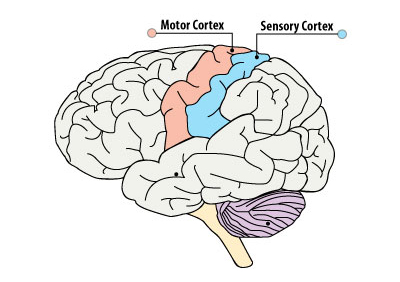What is Somatics?
Clinical Somatic Education or Somatics (for short), is a safe, gentle, low effort movement practice developed by Dr. Thomas Hanna, author of the book ‘Somatics’.
The movements are designed specifically to release chronic muscle tension, alleviate the physical effects of stress and allows you to move freely and comfortably. Somatics puts you back in charge of your body. You learn how to recognise when your muscles are getting stiff and tight, what causes this to happen, and best of all, what to do about it.
It’s a practical and straight forward self care strategy.
Sounds great, how does it work?
By engaging your brain. Your brain has absolute control over your muscles, so if your muscles are stiff and tight, it’s because your brain is telling them to be stiff and tight. Somatics is all about learning how to use your brain to quickly release muscular tension and restore voluntary muscle control. This is achieved via a technique called Pandiculation.
Pandiculation?
Animals pandiculate all the time, up to 40 times a day! Cats in particular are master pandiculators, no wonder they move so well. Kids will also naturally pandiculate a lot, but it is something adults tend to stop doing. A yawn upon waking is a type of reflexive pandiculation. You reach out your arms and stiffen the trunk and extremities often even opening the jaws wide, then you gently relax. Can you remember the last time you actually yawned in that way before getting out of bed on a Monday morning?
So what exactly is a pandiculation?
A ‘pandiculation’ is a voluntary and deliberate contraction or tensing of your muscles, followed by a slow, smooth voluntary and deliberate release of that tension, and then a pause at complete rest.
It’s that simple.
By deliberately contracting your muscles you engage the part of your brain involved in voluntary movements, the sensorimotor cortex (see below). This takes your muscles off auto pilot and puts you back in voluntary control of your muscles.

How do our muscles get tight and sore in the first place?
Great question! There are many reasons; stress (both physical, mental and emotional), accidents, falls, injuries, surgeries, repetitive actions, collisions. All of these can contribute to chronic muscle tension. This tension builds up in our nervous system day after day, week after week. The more stress, accidents and injuries we experience, the more tension we accumulate, the stiffer our bodies feel, and the harder it is to move freely.
A little bit of tension might just make us feel a bit inflexible, not able to touch our toes, or not able to move as freely as we used to.
A lot of tension can contribute to chronic muscle pain anywhere in our body, and severely compromised movement.
In Somatics we have a name for chronic involuntary muscle tightness. We call it Sensory Motor Amnesia or ‘SMA’. You have literally forgotten how to sense and move some of your muscles. Somatic Movements help you remember or relearn how to sense and move those muscles, and, when practiced regularly, get even better at sensing and moving your muscles.
Ok tell me more about Sensory Motor Amnesia…
Sensor Motor Amnesia (SMA) shows up as three predictable patterns of tension that are easily observable in people.
Dr. Thomas Hanna called these patterns ‘The Three Reflexes’.
- Green Light Reflex – this is involuntary tension in all the muscles of the back of the body.
- Red Light Reflex – this is involuntary tension in all the muscles of the front of the body.
- Trauma Reflex – this is involuntary tension in the muscles of one side of the body usually centred around a site of physical injury.
Most people exhibit all three of these reflexes to some degree.
There are a series of safe, simple and enjoyable Somatic Movements to address all of the muscles involved in each of the reflexes described above. Once you have learned them, you never have to worry about getting stuck in one of those reflexes ever again. Somatics takes the mystery out of chronic muscle tension and pain.
Neck and shoulders tight after a stressful day in the office? No problem, I’ll do that simple seated Somatic Movement for my neck & shoulders. That will have me feeling loose and comfortable in no time.
Hips aching after that run or hike at the weekend? Not for long, I’ll do that nice Hip Lift & Reach Somatic Movement before bed tonight, that always makes my hips feel better.
Lower back feeling all jammed up after that Deadlift PR? Not to worry, I know exactly which Somatic Movement to use to make it feel supple and strong again. Arch & Flatten to the rescue!
This sounds like something I need, but I have a few more questions.
Not me, I’m sold. How can I start learning?
Great, you have a few options, see below.
ONLINE 1-1s
Book an Online 1-1 with me here. I’ll teach you the Somatic Movements that will be most helpful for you, and more importantly how to practice them effectively for maximum results and benefit.
ON DEMAND CLASSES
Want to start learning right now? Check out my Learn Somatics Library. 50+ Somatic Movement classes available to you anytime, anywhere. Take a single class or subscribe for access to the entire library. Class #11 is free if you’d like to try before you buy.
LIVE ONLINE CLASSES
Want to take live Somatic Movement class with me? Check out the class timetable here. After class you will have the opportunity to give feedback, share your experience and ask me questions directly.
PRIVATE HANDS ON LESSONS
In Person Appointments are available in North Co. Dublin, Ireland. Learn more here.
Got a question that hasn’t been answered anywhere on the site? Send me a message, I’m happy to help!